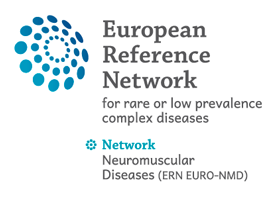12 Aug 2020
Home > Publications >
A A A
A guide to writing systematic reviews of rare disease treatments to generate FAIR-compliant datasets: building a Treatabolome
Authors:
Antonio Atalaia, Rachel Thompson, Alberto Corvo, Leigh Carmody, Davide Piscia, Leslie Matalonga, Alfons Macaya, Angela Lochmuller, Bertrand Fontaine, Birte Zurek, Carles Hernandez-Ferrer, Carola Rheinard, David Gómez-Andrés, Jean-François Desaphy, Katherine Schon, Katja Lohmann, Matthew J. Jennings, Matthis Synofzik, Olaf Riess, Rabah Ben Yaou, Teresinha Evangelista, Thiloka Ratnaike, Virginie Bros-Facer, Gulcin Gumus, Rita Horvath, Patrick Chinnery, Steven Laurie, Holm Graessner, Peter Robinson, Hanns Lochmuller, Sergi Beltran & Gisèle Bonne
Background
Rare diseases are individually rare but globally affect around 6% of the population, and in over 70% of cases are genetically determined. Their rarity translates into a delayed diagnosis, with 25% of patients waiting 5 to 30 years for one. It is essential to raise awareness of patients and clinicians of existing gene and variant-specific therapeutics at the time of diagnosis to avoid that treatment delays add up to the diagnostic odyssey of rare diseases’ patients and their families.
Rare diseases are individually rare but globally affect around 6% of the population, and in over 70% of cases are genetically determined. Their rarity translates into a delayed diagnosis, with 25% of patients waiting 5 to 30 years for one. It is essential to raise awareness of patients and clinicians of existing gene and variant-specific therapeutics at the time of diagnosis to avoid that treatment delays add up to the diagnostic odyssey of rare diseases’ patients and their families.
Aims
This paper aims to provide guidance and give detailed instructions on how to write homogeneous systematic reviews of rare diseases’ treatments in a manner that allows the capture of the results in a computer-accessible form. The published results need to comply with the FAIR guiding principles for scientific data management and stewardship to facilitate the extraction of datasets that are easily transposable into machine-actionable information. The ultimate purpose is the creation of a database of rare disease treatments (“Treatabolome”) at gene and variant levels as part of the H2020 research project Solve-RD.
This paper aims to provide guidance and give detailed instructions on how to write homogeneous systematic reviews of rare diseases’ treatments in a manner that allows the capture of the results in a computer-accessible form. The published results need to comply with the FAIR guiding principles for scientific data management and stewardship to facilitate the extraction of datasets that are easily transposable into machine-actionable information. The ultimate purpose is the creation of a database of rare disease treatments (“Treatabolome”) at gene and variant levels as part of the H2020 research project Solve-RD.
Results
Each systematic review follows a written protocol to address one or more rare diseases in which the authors are experts. The bibliographic search strategy requires detailed documentation to allow its replication. Data capture forms should be built to facilitate the filling of a data capture spreadsheet and to record the application of the inclusion and exclusion criteria to each search result. A PRISMA flowchart is required to provide an overview of the processes of search and selection of papers. A separate table condenses the data collected during the Systematic Review, appraised according to their level of evidence.
Each systematic review follows a written protocol to address one or more rare diseases in which the authors are experts. The bibliographic search strategy requires detailed documentation to allow its replication. Data capture forms should be built to facilitate the filling of a data capture spreadsheet and to record the application of the inclusion and exclusion criteria to each search result. A PRISMA flowchart is required to provide an overview of the processes of search and selection of papers. A separate table condenses the data collected during the Systematic Review, appraised according to their level of evidence.
Conclusions
This paper provides a template that includes the instructions for writing FAIR-compliant systematic reviews of rare diseases’ treatments that enables the assembly of a Treatabolome database that complement existing diagnostic and management support tools with treatment awareness data.
This paper provides a template that includes the instructions for writing FAIR-compliant systematic reviews of rare diseases’ treatments that enables the assembly of a Treatabolome database that complement existing diagnostic and management support tools with treatment awareness data.

